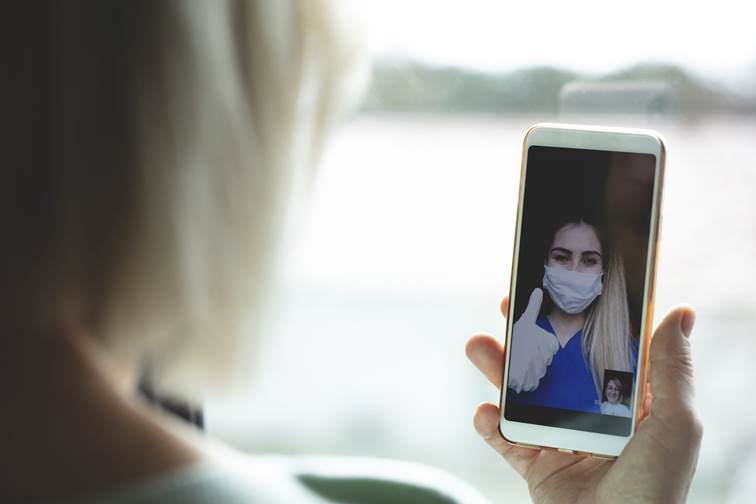By Addiction Campuses
Telehealth, or telemedicine, uses technology to provide safe and high-quality healthcare to patients in the comfort of their own homes.
Telehealth literally means “healing at a distance,” allowing for improved outcomes and increased access of care to patients in any location of the country. These services provide a connection between patients and healthcare networks to make treatment accessible and convenient.
With the threat of coronavirus and COVID-19 disease, telehealth is becoming a major element of substance use disorder (SUD) treatment. Patients struggling with addiction can receive telehealth services that include:
- care management and coordination
- monitoring and psychoeducation
- individual and group psychotherapy/counseling
- medication-assisted treatment (MAT)
- peer support groups
How Does Telehealth Work?
Telemedicine/telehealth works through smartphones, laptops, tablets, and desktop computers. It has been used for years to help patients living in remote or rural areas, as well as patients unable to leave their homes for health reasons or other challenges that keep them homebound.
Telehealth must be provided in accordance with the law, including HIPAA-compliant services that protect the health information of patients.
Telehealth provides a secure, HIPAA-compliant form of contact between treatment providers and patients. Over the years, secure video-conferencing applications have been developed that enable essential security and safety for patients and providers.Telehealth Maintains And Supports Recovery
Telehealth services can be available for alumni who are in recovery to help them cope with disruption, stress, and anxiety during the COVID-19 crisis. Telehealth also allows off-site counselors and therapists to conduct sessions with our residential patients.
Telehealth Assists New Patients To Receive Care
Before taking the major step of attending a residential treatment program, prospective patients can meet with psychiatrists via telehealth services. Addiction Campuses provides telehealth first visits with clinical providers and patients in need of addiction treatment, evaluation, and assessment.
Telehealth Provides Ongoing Therapy
Both during and after treatment, patients can receive individual therapy from licensed therapists or clinical social workers using telehealth technology. Patients can also receive ongoing psychiatric care and medication monitoring with virtual meetings from treatment providers.
Medication-Assisted Treatment (MAT) And Telehealth
Because only about 10 percent of the people who need medication-assisted treatment (MAT) are receiving it, telehealth has been proposed as a potential solution. Telehealth can use technology to provide greater access to treatment for individuals with opioid use disorders (OUD).
At present, people with OUD must complete at least one in-person visit that includes an “appropriate examination” before a physician can prescribe a medication like methadone, buprenorphine, or naltrexone.
Prescriptions cannot be filled electronically because of the Ryan Haight Online Pharmacy Consumer Protection Act, which was enacted in 2008.
One exception to the Ryan Haight Act, however, is a public health emergency declared by the U.S. Secretary of Health and Human Services. Laws and regulatory reforms are underway to enable e-prescribing for patients who are participating in telehealth programs, including MAT for opioid use disorders.
A one-on-one telehealth visit using HIPAA-compliant and secure video conferencing could fulfill this requirement and enable patients who are in isolation or self-quarantine to receive medication-assisted treatment.
Is Telehealth/Telemedicine Safe And Effective For Addiction Treatment?
In addition to screening and assessment, telehealth can also include recovery chats, text messaging, voice messaging, and video support. A combination of these tech aids for therapy and patient support have been effective in serving patients over time.
Research shows that telehealth/telemedicine can increase access to treatment and therapy among people with substance use and co-occurring mental health disorders. Digital technologies can also help build therapeutic communities and bring providers together with patients.

